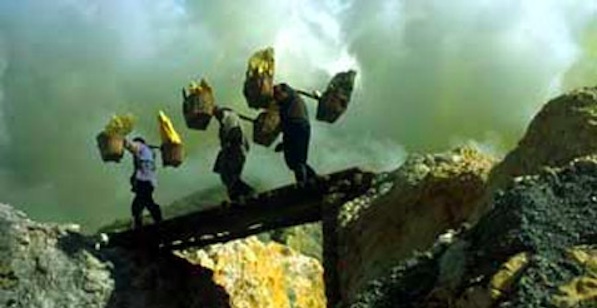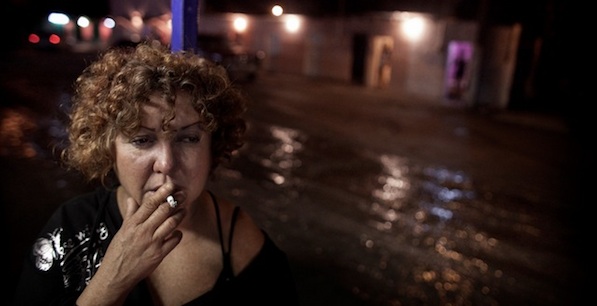With the sudden, tragic passing of Michael Glawogger last month, the world lost not only one of its hardest working directors, but an artist who exemplified a profound fascination in the experience of work itself. His two most accomplished explorations of the subject are the documentaries Workingman’s Death (2005), which captures extreme forms of grueling labor in five sites around the world, and Whore’s Glory (2011), a comparative study of brothels in Thailand, Bangladesh and Mexico. The two films are often combined with Glawogger’s film Megacities (1998) as a loose, globetrotting trilogy of lives subsisting in the underclass. But Workingman’s Death and Whore’s Glory make for a more resonant pairing, as this video tribute to Glawogger hopes to illustrate.
Watch ‘Work Sex Glory: A Tribute to Michael Glawogger’
On a basic level, one can say that Workingman’s Death and Whore’s Glory are about the manual labor of men and women, respectively. That may be a problematic description given that the former shows a variety of men’s work (mining, butchering, welding) while the latter is squarely about female prostitution. But the occupation specificity works in favor of Whore’s Glory, because it allows Glawogger to focus more intently on the themes he wants to visit with each location, drawing sharper comparisons between them, and to become more embedded in the lives of his subjects (it helps that the film spends more time in fewer locations than Workingman’s Death).
There’s both a thrill and a danger to Glawogger’s exhaustive travels across continents and countries. On the one hand, his films present a powerfully resonant picture of exploited labor around the world that allows us to more fully understand both micro and macro job economies. And yet these films may themselves be symptomatic of the global syndrome they critique. There’s a certain jet-setting luxury implied by the making of these films (and, by implication, the act of viewing them) that stands in sharp contrast to their subjects, who are invariably stranded in their lives and occupations.
Therein lies a crucial dilemma to Glawogger’s films that, in order to fully appreciate their full significance, can’t be ignored any less than the ground-level negotiations that went into making them. As detailed in Glawogger’s interview with Dennis Lim, the subjects of his films (or their mafia-type overseers) were compensated for their participation, and a certain degree of staging was employed in certain scenes. These admissions might rankle the more literal-minded documentary ethicists, but if we are willing to give Glawogger enough credit to assume that these films couldn’t have been made without these tactics, then we enter a position with which we can fully appreciate his filmmaking, as one kind of work in relation to the work of those on screen. The intersection of these two works is in some ways as fascinating as that being depicted for the camera; if one were to find fault in his approach, it may be that the process of negotiating these two forms of labor isn’t made more transparent on screen.
But what is on screen offers plenty to take in. In every shot, it’s clear how much Glawogger respects his subjects; not in a sentimentalizing humanist way, but in a way that looks at them squarely and tries to take in the fullness of their reality with non-condescending sobriety. What consistently comes through is the human form at work: how work activates the exertion of bodies and the expressions of faces. Looking at the two films side by side, there’s significantly more bodily exertion in Workingman’s Death; only once in Whore’s Glory do we see the act for which the women subjects are compensated; the majority of the time we see them standing or sitting in expectation, waiting for the next john’s arrival.
And when the next john arrives, we see something relatively absent from Workingman’s Death: a significantly higher number of facial expressions from the women—smiles and come ons—that turn out to be work every bit as crucial as that which involves the rest of their bodies. The sharp contrast of behaviors between male and female manual labor in these films raises provocative questions regarding how behavior might be gendered in professions of all kinds. These insights apply to everyone, even those who don’t consider themselves to be employed—to live is to be working at something, in some way. The films of Michael Glawogger attest to as much.






